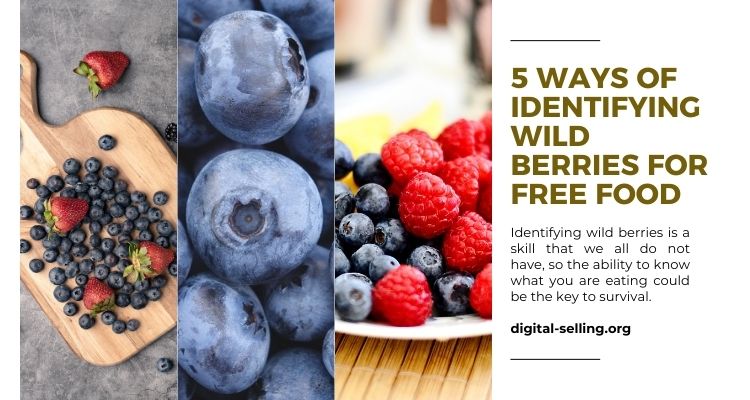Identifying wild berries is a skill that we all do not have, so the ability to know what you are eating could be the key to survival.
Identifying wild berries is a valuable skill for foragers, hikers, and nature enthusiasts. However, it can be a challenging task due to the vast variety of species and the potential dangers associated with consuming the wrong berries. In this comprehensive guide, we’ll explore five ways to identify wild berries. So, ensuring you can enjoy their flavours and nutritional benefits safely.
-
Study Local Field Guides and Resources
- One of the most reliable methods for identifying wild berries is by using field guides and local resources. Field guides are typically available in bookstores, and also in libraries, or online. They provide detailed information on the flora and fauna of a specific region. These guides often contain clear photographs, illustrations, and descriptions of different berry species. By narrowing your search to your geographical area, you can focus on the most relevant species. In addition, increase your chances of accurate identification.
- Local resources, such as botanical gardens, nature centers, and agricultural extension offices, can also be invaluable. Experts in these locations may offer workshops or guided walks, where you can learn about the native berry species in your area. Additionally, they can provide information on the best time to forage for berries and any associated safety concerns.
-
Learn to Identify Key Features
- When identifying wild berries, it’s essential to become familiar with key features that can help you distinguish between edible and toxic species.
- These features include:
- Color: The color of the berries can be a crucial indicator. However, it’s important to note that color alone is not a foolproof method for identification, as many edible berries come in various shades of red, purple, blue, and black.
- Shape and Size: Pay attention to the shape and size of both the berries and their leaves. Berries vary in shape from round to oval, and leaves can be serrated, toothed, or smooth-edged. These features can help you narrow down the possibilities.
- Growth Habit: Consider the growth habit of the plant. Is it a low-growing shrub, a vine, or a tree? Also, different berry-bearing plants have distinct growth patterns that can aid in identification.
- Leaf Arrangement: Examine the arrangement of leaves on the plant’s stem. Are they opposite, alternate, or whorled? Leaf arrangement can be a valuable characteristic in identifying berry-bearing plants.
- Texture: Feel the texture of the leaves, stems, and berries. Are they smooth, hairy, or prickly? Texture can provide additional clues about the plant’s identity.
-
Take Note of the Habitat
- The habitat in which you find the berries can be a strong indicator of their identity. Different species of berries have specific environmental preferences. For example, you may encounter blueberries in acidic, well-drained soils in wooded areas, while blackberries often grow in disturbed areas, along roadsides, or in open fields. By noting the type of ecosystem and the soil conditions, you can narrow down your search and make a more accurate identification.
-
Observe the Growth Season and Flowering Patterns
- Understanding the growth season and flowering patterns of berry-bearing plants is crucial. Different species produce berries at specific times of the year, which can help you eliminate some possibilities. Some berry-bearing plants flower in the spring, while others bloom in the summer or fall. Knowing when these plants typically fruit can guide your identification process.
-
Seek Expert Assistance and Verification
- When in doubt, it’s always wise to seek expert assistance or verification.
- There are various ways to do this:
- Join local foraging groups or online communities where experienced foragers can provide guidance and help identify unfamiliar berries.
- Attend workshops, guided nature walks, or foraging classes led by experts who can teach you how to identify wild berries safely.
- Utilize plant identification apps and websites that allow you to upload photos for identification. Be cautious with online resources, and always cross-reference information from multiple sources.
- Contact your local agricultural extension office or a nearby botanical garden to consult with horticulturists and botanists who can help with berry identification.
Final words about identifying wild berries for free food
In conclusion, identifying wild berries is an enjoyable and rewarding skill. However, it requires careful observation, research, and sometimes expert guidance. By using local resources, learning key features, considering the habitat and growth patterns, and seeking expert assistance when needed, you can confidently identify wild berries and make the most of your foraging experiences while staying safe and avoiding toxic plants. Remember to exercise caution, follow ethical foraging practices, and respect the environment during your berry-hunting adventures.
